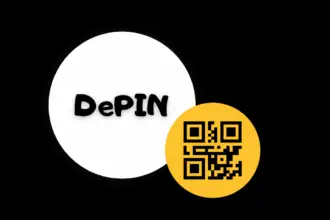
An airdrop is a type of cryptocurrency distribution where a certain number of tokens are given to a specific group of people for free or for performing a certain action. Airdrops are commonly used as a marketing strategy to promote a new cryptocurrency project or to increase the adoption and awareness of an existing one. They are also used as a way to distribute tokens to a specific group of people, such as community members or early investors.
Airdrops can happen in several ways. Some projects conduct airdrops as part of their initial coin offering (ICO) to attract investors. In this case, a certain number of tokens are given to investors who participate in the ICO. Other projects conduct airdrops as a way to increase the adoption and awareness of their cryptocurrency. In this case, tokens are given to people who sign up for the project’s website, participate in social media campaigns, or refer new users.
Airdrops can also be used as a way to distribute tokens to a specific group of people, such as community members or early investors. These airdrops are usually conducted by established projects that want to reward their community or incentivize early adopters. These airdrops are usually conducted on a specific date and time, and users must meet certain requirements to be eligible to receive tokens.
The process of receiving tokens from an airdrop is usually straightforward. Users must have a compatible wallet that supports the specific cryptocurrency, and they must provide their wallet address to the project’s website. Once the airdrop is completed, the tokens will be distributed to the provided wallet addresses.
Airdrops have become a popular way for cryptocurrency projects to attract new users and increase the adoption of their tokens. They are a cost-effective way for projects to promote their cryptocurrency and gain a larger user base. However, it’s important to note that airdrops are not without their drawbacks.
One of the main drawbacks of airdrops is that they can be used to promote fraudulent projects. Scammers may conduct fake airdrops to lure users into providing their personal information or cryptocurrency wallet addresses. These scammers can then use this information to steal users’ tokens or personal information.
Another drawback of airdrops is that they can lead to a large number of unqualified holders of a token. These holders may not have any interest or understanding of the project and its technology, and they may not be interested in holding the tokens long-term. This can lead to a lack of liquidity and volatility in the token’s value.
It’s important to be careful when participating in airdrops and to only participate in airdrops from reputable projects. It’s also important to make sure you have a compatible wallet and to never share your private keys with anyone.
In conclusion, an airdrop is a type of cryptocurrency distribution where a certain number of tokens are given to a specific group of people for free or for performing a certain action. Airdrops are commonly used as a marketing strategy to promote a new cryptocurrency project or to increase the adoption and awareness of an existing one. They are also used as a way to distribute tokens to a specific group of people, such as community members or early investors. However, it’s important to be cautious and only participates in airdrops from reputable projects and to protect your personal information and wallet.










